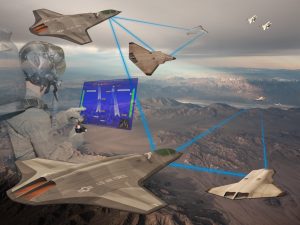By Jacob Parakilas

As remote and autonomous systems become cheaper and more capable, they are proliferating both horizontally and vertically amongst the world’s military. More militaries are buying them, and they are buying them to fulfill an increasing number of roles.
There has already been a considerable amount of commentary — including in this column — about the impact that cheaper combat drones are having on warfare thanks to the recently concluded war between Azerbaijan and Armenia over Nagorno-Karabakh. But as drones go from specialist novelties to force multipliers to forces in and of themselves, they will also force fundamental changes in the relationship between commander and commanded, and between cause and effect. Strangely, the best lens to understand that change may be video games.
Of course, the linkage between warfare and video games is neither new nor without controversy. About 15 years ago, at the height of its counter-insurgency operations in Iraq, the U.S. Army released a recruitment tool in the form of a first-person shooter game called America’s Army. The game was criticized for trivializing real-world violence, and couldn’t match the reach big-budget commercial games like Halo or Call of Duty, but nevertheless persisted through several iterations.
Around the same time, the first small unmanned vehicles were being deployed by American ground forces. As Peter W. Singer relates in “Wired for War,” they were controlled with something that strongly resembled a PlayStation controller; an intentional choice made on the basis that soldiers and Marines in their late teens or early twenties would have grown up with game consoles and would be intuitively familiar with their dual thumbstick control system.
More recently, the use of drones in low-intensity warfare has been described in terms of making war more video game-like, and therefore more politically palatable. This, however, is less a new development than an update on the Gulf War-era thesis that wars conducted by airpower and relayed to a distant audience at home through optical sensors were qualitatively different than previous armed conflicts.
But these examples all rely on a first-person perspective. Whether taking on a character role in a first-person shooter or controlling a UAV, the human operator is effectively exchanging their perspective for that of the remote unit and issuing it direct commands. While it remains necessary for most operations, first-person control is inherently limiting: it relies on constant attention and real-time corrections from a human operator, who must be in a position of safety as they must focus on their control task.
But as drones proliferate, become increasingly autonomous and start to significantly outnumber their operators, the paradigm will change to a different kind of video game: the real-time strategy game (RTS). In an RTS, the player commands multiple units, issuing broader instructions to groups of them (move to this location, attack this target), while viewing the arena from a distanced perspective.
The idea of human operators controlling multiple drones is still in its early stages, with trials underway of drone swarms and “Loyal Wingman”-type systems. But the state of the art is progressing rapidly.
This in turn challenges the essential characteristics of soldiering. It is hardly novel to suggest that given the proliferation of technology in warfare, brute strength and physical endurance are no longer the only relevant qualities for armed forces personnel; reflexes, intellectual agility and problem-solving skills are increasingly important as the soldier’s toolkit encompasses more and more sophisticated tech. But switching to an indirect-control model will add a crucial element: the ability to seamlessly multitask.
This is a skill already possessed by professional RTS gamers. Their ability to multitask — measured by a metric called Actions per Minute, or APM — is huge; at peak times, a professional player might be making 800 APM; more than 10 a second. Most of us can barely type that quickly, let alone take disparate actions in a strategic context.
It may be that as simultaneous drone operation becomes an increasingly crucial skill, militaries will recruit directly for multitasking ability. Certain elements can be taught, much as routines like Crew Resource Management are drilled into flight crews. Indeed, given the vastly higher stakes, they should be — though whether such routines will be in place in advance of operational deployment is a question worth asking.
But it will also require more sophisticated ways for humans and their machines to communicate. Simply put, keyboards, mice and computer monitors are not going to be able to keep up with the operational needs of controlling the autonomous units of the near future. The human being controlling them will need to be able to process vast amounts of information and make rapid decisions with enormously consequential ramifications.
On the human side, this will have impacts far beyond the state of military recruitment. Remote warfare has already created new and not fully understood psychological impacts on both operator and target; outsourcing and splitting a human being’s perspective of war will no doubt have its own unpredictable toll above and beyond that. And there is no video game that can prepare us for that.
No comments:
Post a Comment